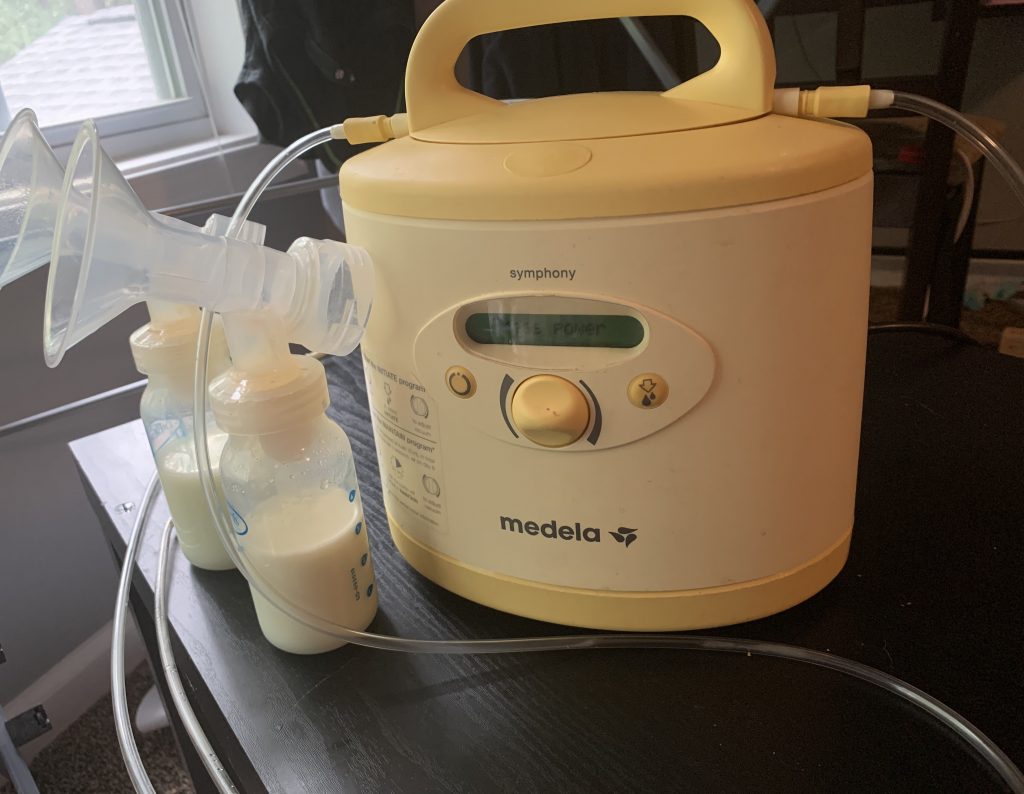 Yesterday I found myself in the dairy section of the grocery store admiring all the milk and milk alternatives available. My third child turns one next week and we will slowly begin the transition to cow milk.
Yesterday I found myself in the dairy section of the grocery store admiring all the milk and milk alternatives available. My third child turns one next week and we will slowly begin the transition to cow milk.
I have been pumping milk for my son since the day he was born. It has been a critical and vital part of my daily routine. Six times per day for 20 minutes I have to stop and pump in order to keep up with his needs. He is a solid boy at 23 pounds and I credit this to him being such a voracious eater. There’s no denying his love for breast milk!
However, the road to becoming an exclusive pumper was not an easy one…
My son was born with a severe tongue and lip tie that was diagnosed by the lactation consultant in the hospital when he was only two days old. I had spent the last four years nursing and pumping for my two older children who, ironically, also had tongue ties, so this was not new to me.
I knew he needed a revision done sooner rather than later in order to nurse effectively, and so when he was two weeks old we took him in to have the procedure done. It was quick and he only cried for a minute or so, however, I may have shed a few tears as well. We followed up with a lactation consultant immediately after the procedure and put him to the breast but he just nuzzled up and fell fast asleep. He wouldn’t nurse.
He couldn’t latch and transfer milk effectively and, after lots of trying and frustration, I made the decision to become an exclusive pumper. I had a healthy milk supply that I refused to let go to waste. In the early days of exclusively pumping, I didn’t have much support. It’s not something most people see as a long-term solution. I was told by one nurse that I wouldn’t be able to keep up with my baby’s growing demands if I didn’t get him to nurse.
Well here I am 12 months later and I sure proved her wrong! Pumping around the clock is a labor of love, and my hope is to provide tips and support for other moms who may find themselves in a similar position. Pumping can feel like a lonely road but I promise you it is possible.
Here are a few tips I have learned along the way.
1. Choose a pump that is comfortable and works for you.
I personally love my double electric pump; it gives me the best output in the shortest amount of time. There are many different pump options these days and it is critical you have parts that fit and are comfortable. There are three sizes of breast shields for a reason, one size does not fit all in this case.
After the first week or so pumping should not be painful. Your pump will become your best friend, and almost feel like another limb, so make sure you are using one that works for you. The third time around I decided to rent a hospital-grade pump from the hospital where I delivered. For an affordable monthly fee, I can use this “Cadillac of pumps” that normally retails for $1300. I am so grateful for this hospital program that I wish more new moms had access to.
Having a designated, peaceful pumping space is also important. Pumping amid chaos creates stress which hinders output and can add to the already time-consuming process, which I have learned the hard way.
 2. Take care of your body.
2. Take care of your body.
Pumping takes a lot of energy and burns a substantial amount of calories. It is recommended that you continue to take prenatal vitamins while nursing or pumping, as well as eat a balanced nutritious diet that will support your pumping goals. Oatmeal, fenugreek, and nuts are known to help increase milk supply. Also staying hydrated is crucial to maintaining a healthy milk supply.
3. Set a schedule and stick to it.
I was told early on that I would not be able to keep up with my baby’s needs by pumping alone. I was fed misinformation by someone who should have been supporting and encouraging me.
All babies go through growth spurts, and that is why it is important once you know how many ounces per day your baby needs that you stick to your pumping schedule. You can always freeze the milk they don’t drink. Breast milk is good in the freezer for up to six months. It is easier to have too much milk than too little, especially when a growth spurt hits. I always tried to stay a few ounces ahead of my son’s needs for this very reason. I never wanted to be pumping while my baby was crying for a bottle.
4. Find a tribe of other moms who get it.
There are support groups on social media for exclusive pumpers and working moms who pump. I have found that having a community you can turn to with questions, frustrations, or concerns can make this journey a happier one. Always remember that you are not alone.
5. Give yourself grace.
This journey can be exhausting, and if it is starting to affect your mental health reach out to a health care provider you trust. We are all doing the best we can for our babies, and at the end of the day, a healthy and thriving baby and mom is what matters most.














